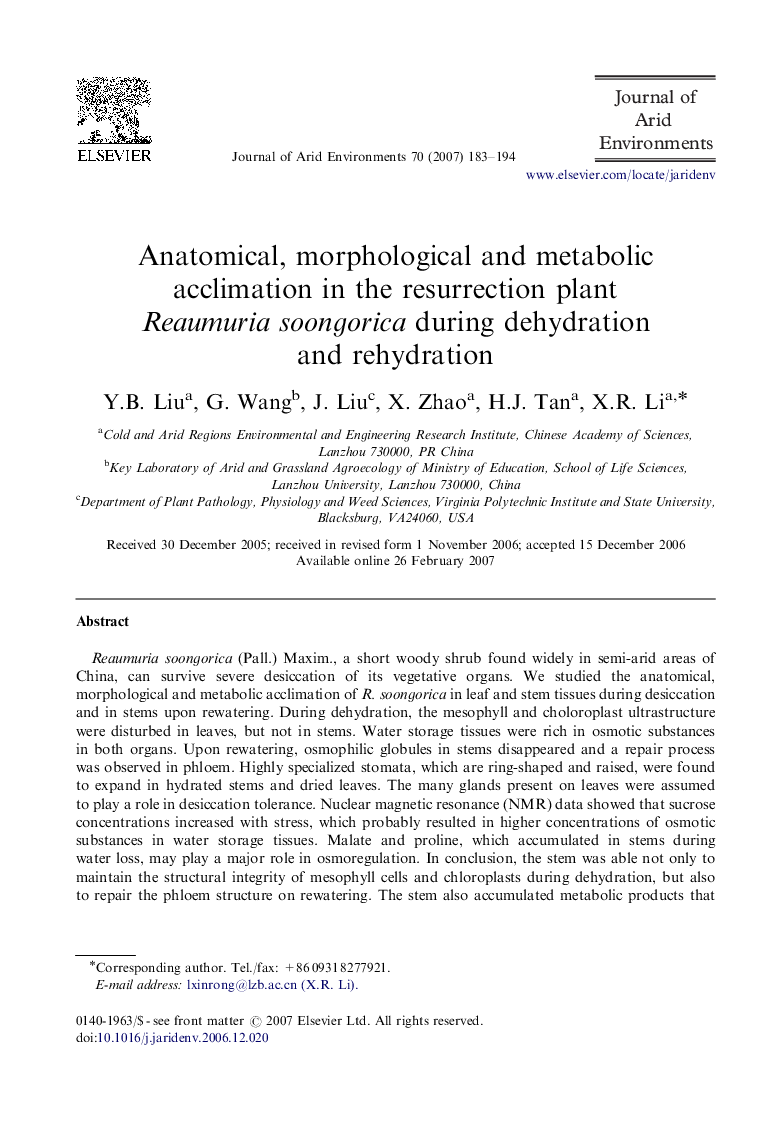| Article ID | Journal | Published Year | Pages | File Type |
|---|---|---|---|---|
| 4394490 | Journal of Arid Environments | 2007 | 12 Pages |
Abstract
Reaumuria soongorica (Pall.) Maxim., a short woody shrub found widely in semi-arid areas of China, can survive severe desiccation of its vegetative organs. We studied the anatomical, morphological and metabolic acclimation of R. soongorica in leaf and stem tissues during desiccation and in stems upon rewatering. During dehydration, the mesophyll and choloroplast ultrastructure were disturbed in leaves, but not in stems. Water storage tissues were rich in osmotic substances in both organs. Upon rewatering, osmophilic globules in stems disappeared and a repair process was observed in phloem. Highly specialized stomata, which are ring-shaped and raised, were found to expand in hydrated stems and dried leaves. The many glands present on leaves were assumed to play a role in desiccation tolerance. Nuclear magnetic resonance (NMR) data showed that sucrose concentrations increased with stress, which probably resulted in higher concentrations of osmotic substances in water storage tissues. Malate and proline, which accumulated in stems during water loss, may play a major role in osmoregulation. In conclusion, the stem was able not only to maintain the structural integrity of mesophyll cells and chloroplasts during dehydration, but also to repair the phloem structure on rewatering. The stem also accumulated metabolic products that play roles in osmoregulation. All these findings indicate that the stem is an essential organ for water deficit survival.
Related Topics
Physical Sciences and Engineering
Earth and Planetary Sciences
Earth-Surface Processes
Authors
Y.B. Liu, G. Wang, J. Liu, X. Zhao, H.J. Tan, X.R. Li,
